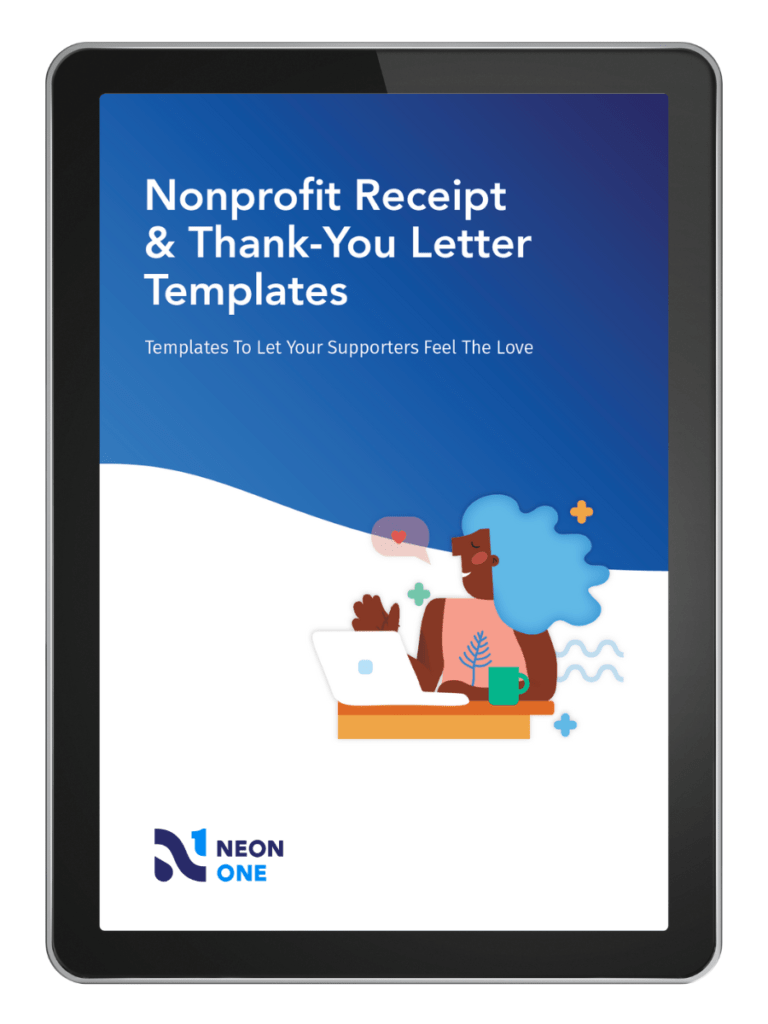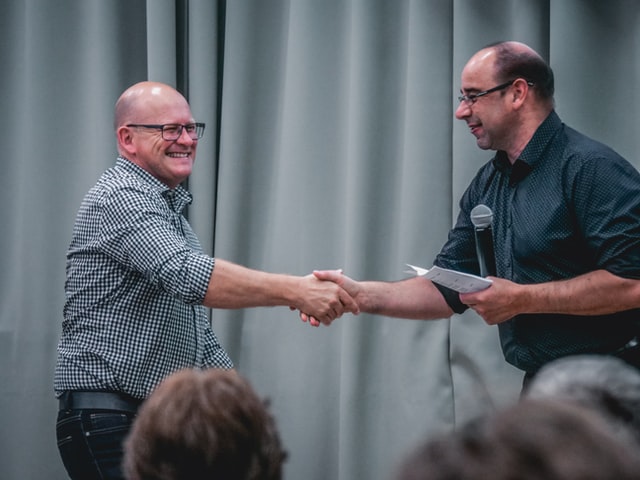
For many organizations, year-end fundraising campaigns represent a significant portion of their annual revenue. Nearly one-third (31%, to be exact) of annual giving occurs in December: It’s one of the most important months for fundraising!
Spending some time planning your year-end fundraising activities will help you connect with donors, inspire them to support your work, and start building donor relationships that will carry over into the next year and beyond.
In this article, we’ll look at three important steps to take as you start planning your year-end fundraising campaign, including:
- Setting your year-end fundraising goals
- Identifying your campaign’s story
- Planning for donor retention
Let’s take a look!
How to Set a Year-End Fundraising Goal
How much would you like to raise during your year-end campaign? Instead of choosing a number out of thin air, take some time to think through what’s reasonable for your organization. These steps will help you set an ambitious (but achievable) goal.
Review Past Performance
The best fundraising goals will be based on historical fundraising performance. Take a look at past fundraising campaigns and use your successes to inform your plan.
If you ran a year-end fundraising campaign last year, look back at that data. How much did you raise? How many new donors did you acquire? Which of your year-end donors were repeat donors?
This is invaluable information. If you know you raised $12,000 last year, recruited 75 new donors, and received support from 150 returning donors, setting new goals this year will be easy.
You probably won’t set a fundraising goal of $50,000 this year—$20,000 may be more reasonable. You may also set goals to acquire 85 new donors and engage 200 returning donors.
Past data is an excellent place to start when setting contemporary fundraising goals.

What to Do if You’re a New Organization
What do you do if you’re a new organization with no year-end fundraising data? Try looking at the fundraising numbers you’ve achieved so far.
If you’ve raised $25,000 so far this year and know that nonprofits commonly raise around 30% of their revenue during the end of the year, you could try setting a goal of $11,550. If you’ve only been around a few weeks (or even a few months), get together with your board members and any other staff to come up with a loose goal.
Even if you don’t reach it this year, you’ll have set an important benchmark you can use to inform next year’s goals.
Analyze Your Current Situation
It’s important to take stock of your budget, operations, and strategic goals before launching a big year-end campaign. Analyzing different elements that may impact your performance can help you plan a more effective campaign.
Consider any unmet financial needs from this year and how your year-end fundraiser will potentially help bridge those gaps.
Are you behind on your yearly fundraising goals because of outside circumstances? You may need to set your year-end goal slightly higher than normal and adjust your appeal to provide some background while making a slightly more urgent call for action.
Are you $15,000 away from meeting your capital campaign’s fundraising goal? You can include details about your capital campaign in your appeal and invite donors to be part of the exciting last push toward that goal.
Once you have a solid grasp of your current financial situation, take stock of your organization’s day-to-day operations and programs. Does your office need a new printer? Do you need a new cooler for your food pantry? Are you planning to serve more clients in your winter programming?
The answer to all of these questions will help you set fundraising goals and inform the story you tell during your campaign.
Set Goals for Year-End Fundraising
Setting specific, measurable goals is vital to the success of your year-end fundraiser. Your primary goal will almost certainly be revenue-based: It is a fundraiser, after all!
As you set fundraising goals, ask yourself:
- How much you want to raise overall
- If that amount is reasonable given historical fundraising numbers and current circumstances
- How you’ll allocate that money
Setting a fundraising goal of $20,000 is great. Setting a fundraising goal of $20,000 and knowing exactly how much of that money will go to each department, program, or need at your organization is even better.
Not all year-end fundraising goals need to be financial. You may also set goals around donor acquisition, new volunteer registrations, and even things like newsletter signups or social media followers.
Goal-setting is an important part of any campaign, even during other parts of the year. Dig into the topic by checking out our article on how to set (and meet!) fundraising goals.
Identify Your Year-End Fundraising Campaign Story
Donors love stories. In her article about how to write a stellar fundraising appeal, Mary Cahalane, Principle at Hands-On Fundraising, writes, “There’s a reason you don’t send donors a grant proposal. Stories say so much more than statistics! Humans are wired for narrative. It’s the best way to learn and the most enjoyable.”
If you want to connect with donors and inspire them to support your cause, you’ll need to tell them a great story. Look at the fundraising goals you’ve set for yourself and the breakdown of how you’ll use that money. How can those points help you tell a story?
Say you need to raise $20,000 to meet your yearly fundraising goals. This is higher than usual because your facility was damaged in a storm.
You could try telling your donors a story about a client who relies on your programming and explain that those programs are in jeopardy unless you can raise enough money to make repairs. Invite your supporters to be a part of the solution to that problem by making a gift.
For more outstanding insights into how to craft a story that complements your appeals, check out Mary’s article below.
Plan Your Year-End Donor Retention Activities, Too
Most nonprofits—including yours—will almost certainly see an influx of new donors in the last weeks of the year.
The number of donors you acquire will depend on lots of different factors, including when you start raising money, how much time you spend building visibility on social media, how you spread the word about your campaign, and other elements.
But, whether you acquire three new donors or 300, it’s important to have a retention plan in place.
Retaining donors is a more cost-effective fundraising strategy than constantly acquiring new ones. You can read more about how to build a donor retention strategy over here. Pay attention to the point about establishing a communications timeline!
Create a Donor Retention Communications Timeline
The days and weeks immediately after a new donor’s first gift are the best times to send them different messages that will increase the likelihood that they give again in the future.
Some elements you’ll want to add to your new-donor communications timeline include:
- A donation receipt and thank-you message
- An email (or even a whole series of emails) thanking them for supporting you and welcoming them to your community
- An update about how their gift made a difference
- A second appeal (only after they’ve been thanked and understand their impact!)
Your communications timeline for returning donors will look slightly different. Plan for them, too!
Make sure they receive:
- A donation receipt and thank-you message
- An impact update
- Future appeals that reference their past support
The messages you send your donors—whether they’re brand new or loyal supporters—are an important part of a successful retention strategy.
Other Donor Outreach Ideas
Your donor communications are the cornerstone of your retention plan. But adding other types of outreach can make an even bigger impression on your donors and increase the chances of them continuing their support. Try adding:
- Thank-you calls (voicemails count!)
- Handwritten thank-you cards
- Donor surveys
- Donor appreciation events
- One-on-one meetings with important donors
What other ways can you build long-lasting relationships with your donors? The possibilities are endless!
If it’s executed well, your strategy will result in a loyal base of donors who are excited about working with you to make an impact in your community for years to come.
Make Year-End Fundraising Campaigns Count
Whether you’re planning your first-ever year-end fundraising season or have done this dozens of times already, these steps—setting a fundraising goal, planning your campaign story, and building a donor retention plan—will help make your campaign a success.
Be methodical about collecting past data when setting your goals, and consider non-financial goals that can help your organization thrive long term. Use your goals to inform your campaign’s story and write compelling appeals, then make sure you have a plan to retain the new donors you acquire during the end of the year.
Whether you’re setting up the automated receipts for your donation form or creating thank-you messaging for the days and weeks after the end of the year, these templates will help!
Check out our Nonprofit Receipt & Thank-You Letter Templates for resources that will help you craft the best-ever messaging for your year-end donors.

Knock Their Socks Off With These Thank-You Templates
Whether you want to refresh your existing receipt messaging, create all-new transaction receipts, or write a great thank-you letter, you’ll find a template that will help.
Join the discussion in our Slack channel on connected fundraising








